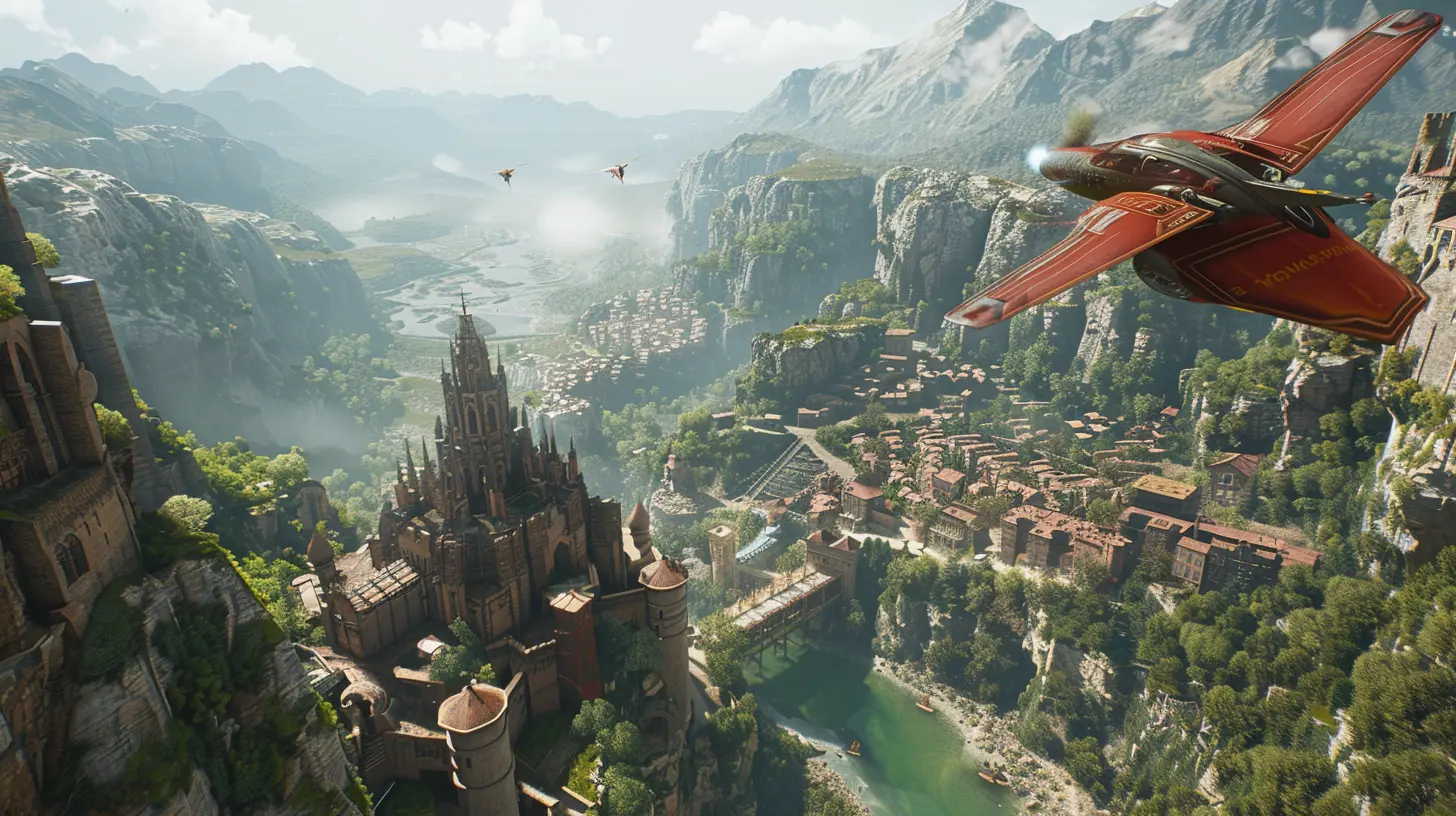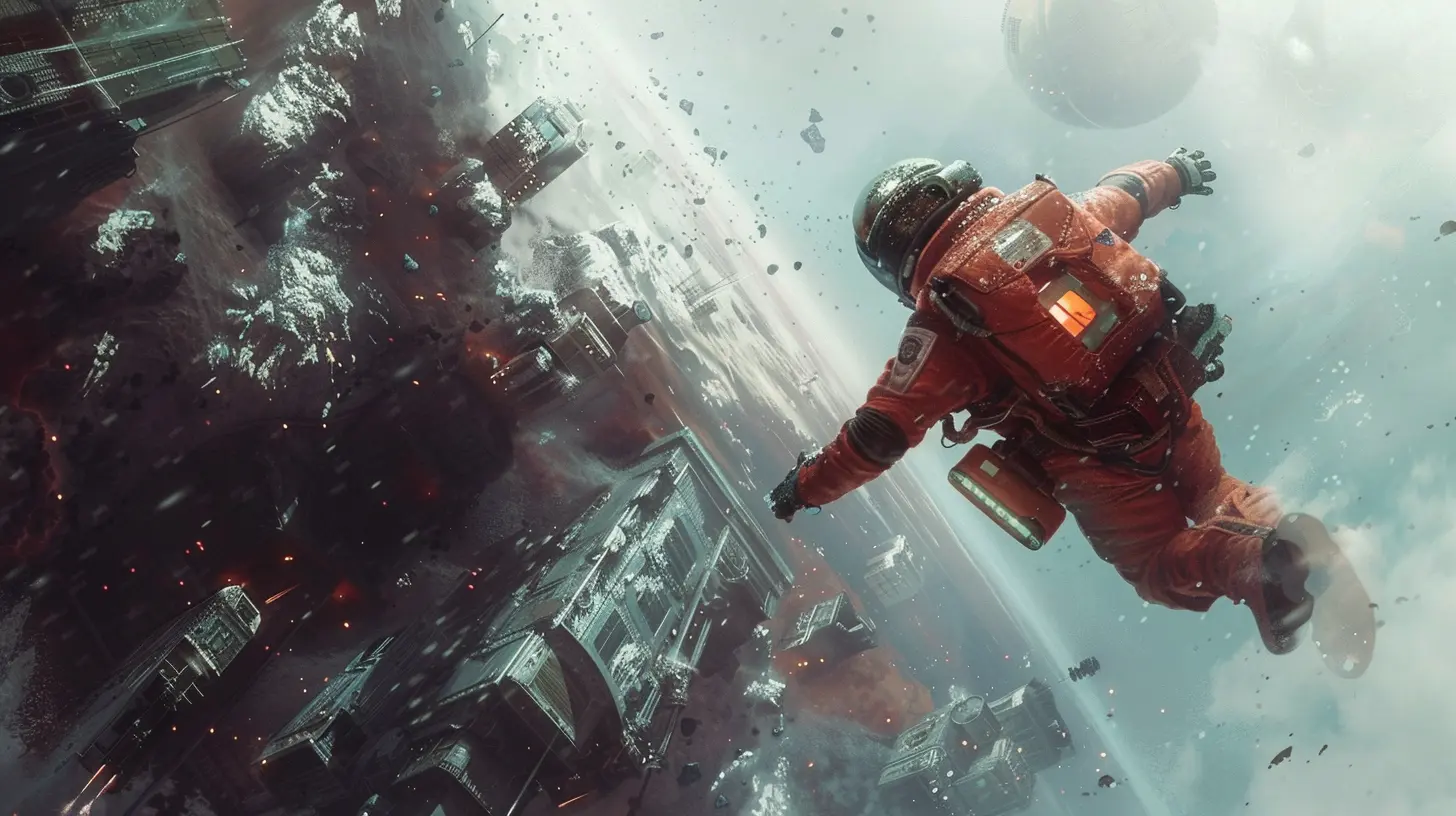Exploring the Impact of Realistic Physics in Action Games
11 August 2025
When it comes to video games, there’s one thing we all crave—immersion. Whether you're a casual gamer or someone who spends hours racking up headshots and perfecting wall-runs, immersion is the magic ingredient that pulls you into a virtual world and refuses to let go. You feel it when you’re dodging bullets in slow motion or watching objects react exactly as they should when hit. And that's where realistic physics in action games comes in.
But here’s the big question: How does realistic physics actually impact the games we play? Is it just a fancy technical feature, or does it actively change how we experience gaming? Buckle up, because we’re about to dive into this topic, and I promise it'll be a ride full of twists, turns, and gravity-defying flips. 
What Is Realistic Physics in Video Games, Anyway?
Alright, first things first—what do we mean by "realistic physics"? In the simplest terms, it’s when a game’s mechanics mimic the laws of physics we experience in real life. Think gravity, momentum, friction, and even the way objects break apart.Ever played a game where you shoot a barrel, and instead of just vanishing, it explodes into a million tiny fragments? Or where a falling body doesn’t float like it’s made of Styrofoam but crumbles under its own weight like it should? That’s realistic physics at work.
Game developers use complex physics engines—like Havok, Unreal Engine, or Unity’s PhysX—to simulate these effects. And while they’ve come a long way, it’s the action games genre where realistic physics really shines. 
Why Should You Care About Realistic Physics?
Let’s be real—no one’s buying action games just for their physics engine. You’re there for the fast-paced combat, the thrill of a high-speed chase, or pulling off some epic stunts. But here’s the thing: without realistic physics, half of those experiences would fall flat.Imagine playing a first-person shooter where a grenade explodes, but the enemies just bounce away like beach balls instead of being blasted off their feet. Or a platformer where your jumps feel weightless, like you’re playing on the moon. Wouldn’t that completely break the immersion for you?
Realistic physics makes all those jaw-dropping moments feel real. It's the invisible hand that makes the chaos believable, the destruction satisfying, and every movement grounded in reality. And trust me, once you experience it, there’s no going back. 
Enhancing Gameplay With Realistic Physics
Now, let’s talk specifics. How does realistic physics actually change how we play action games? Spoiler alert: It’s not just about pretty explosions.1. Creative Problem-Solving
Realistic physics gives players more freedom to solve problems their way. In games like Half-Life 2, for example, you can use the environment to your advantage—rolling barrels, collapsing structures, or even launching objects using the gravity gun.Physics becomes a tool, not just eye candy. And honestly? That’s way more fun than the old “find the key to open the door” mechanic. Don’t you agree?
2. Dynamic Combat
Combat in action games hits differently when physics come into play. Think about Max Payne and its iconic bullet time mechanic. Watching bullets tear through the air in slow motion while enemies ragdoll to the ground? Priceless.Realistic physics makes battles unpredictable and exhilarating. No two encounters feel the same because objects, explosions, and bodies all react differently each time. It’s as close to unscripted chaos as gaming can get.
3. Destructible Environments
Raise your hand if you love blowing stuff up in video games. Yeah, same. Games like Red Faction: Guerrilla and Battlefield take destruction to the next level by making buildings, walls, and vehicles fully destructible.This isn’t just for show—it changes how you play. Need to flush out enemies from cover? Blow the wall to pieces. Want a shortcut? Blast your way through the building. Physics turns the environment into part of the action, which is insanely satisfying. 
The Challenges of Realistic Physics
Of course, nothing comes without its challenges. Implementing realistic physics in games sounds amazing, but developers face some serious hurdles. For starters, it’s a nightmare for performance. Simulating accurate physics takes a ton of processing power, which can easily cause frame rate drops if not optimized properly.And then there’s the balancing act—how much realism is too much? After all, we play video games to escape reality, not be bogged down by it. If jumping off a roof in-game causes your character to break every bone, is that fun or just frustrating? Developers often have to find a sweet spot between realism and playability.
Realistic Physics: The Building Block of Future Action Games
So, where is this all heading? Well, as technology keeps getting better, so will physics in games. We’re already seeing huge leaps with games like The Last of Us Part II and its hyper-detailed animations and collision systems. Heck, even indie studios are getting in on the action, creating games with convincing physics that rival AAA titles.Imagine a future where every action game has destructible environments, lifelike animations, and physics so real you can feel the weight of every punch and the recoil of every shot. Honestly, it’s not as far off as you might think.
Are Realistic Physics Always Necessary?
Here’s an interesting thought: Do all action games need realistic physics? The answer isn’t as straightforward as you’d think.Take games like Devil May Cry or Bayonetta, for example. These are over-the-top action games that prioritize style and flair over realism. Could you imagine Dante’s sword not slicing cleanly through everything in his path because of “physics”? No, thank you!
At the end of the day, it depends on the game’s tone. Sometimes, physics realism adds depth. Other times, it would just get in the way of the fun.
Conclusion
Realistic physics is like the unsung hero of action games. It’s not always the first thing you notice, but it’s often the reason you’re having such an amazing time. From making combat more dynamic to turning the environment into part of the gameplay, physics has completely reshaped how we experience action games.Sure, it has its challenges and limitations, but at the end of the day, it’s hard to imagine the genre without it. So, the next time you’re playing your favorite action game and marveling at the explosions, the destruction, or how fluid everything feels, take a moment to appreciate the physics engine working tirelessly in the background.
Because let’s face it—without realistic physics, gaming just wouldn’t be the same.
all images in this post were generated using AI tools
Category:
Action GamesAuthor:

Tina Fisher
Discussion
rate this article
1 comments
Capri Mullen
Great article! The exploration of realistic physics in action games truly enhances immersion and gameplay. Looking forward to seeing how developers continue to innovate in this area.
August 21, 2025 at 3:50 AM

Tina Fisher
Thank you for your feedback! I’m glad you enjoyed the article and share the excitement for future innovations in realistic physics in gaming.


